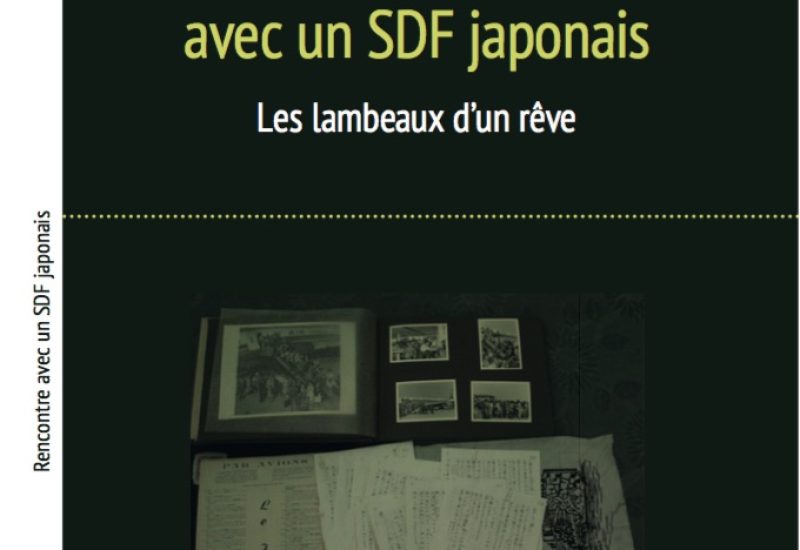Recent years have seen an explosion of interest in the historical relations of western, chiefly European, and Arab countries and societies, much of it in the wake of the late Edward Said’s pioneering research in his book Orientalism. However, less attention has been paid to the relationship between Arab and other Asian societies and peoples, at least in research published in European languages.
For this reason alone, Lebanese academic Bassam Tayara’s Le Japon et les arabes, a study of how the Arab world has been viewed from Japan from the earliest times to the decades following the 1868 Meiji Restoration, is a useful addition to research. However, the book also tells a fascinating story in its own right, of how Japanese society, closed to the outside world until the final decades of the nineteenth century, viewed countries that, though culturally and geographical distant, seemed to share common problems and historical experiences.
Indeed, if Tayara is to be believed one at least of these countries, Egypt, was something of an object lesson to the Japanese of how not to deal with European domination and the challenge of modernisation. Egyptian experience, he says, was a “counter example” for Japan, and “the indebtedness of the state [to the Europeans], the weight of European consular jurisdiction, the geographical position of the country that made it the prey of economic and military imperialism” represented the kinds of danger Japan should avoid at almost any cost.
Though Tayara focuses on the period following the Meiji Restoration, his aim is much broader than this, and Le Japon et les arabes contains much useful information on the earliest contacts between Japan and the Arabs. During earlier periods Japanese knowledge of Arab societies was limited, only “distant rumours” of them reaching the country through trade with China and from the arrival of Arab, Persian or Central Asian merchants along the trade routes of the Asian Silk Roads.
Thus, the earliest word for Arab in Japanese, transliterated as daiji, or tashi, seems to be related to the Arabic tajir, or merchant, Tayara tracking down the earliest unambiguous reference to Arabs in Japanese records to 753 in an account of a reception given by the Chinese Emperor Su Zong, to which Arab as well as Japanese delegations were invited. However, it is impossible to know who the people making up these delegations were, or in what sense they were Arabs, since early Japanese scarcely differentiates between the inhabitants of India, Central Asia, Persia, and other distant countries and areas.
Things become clearer following the Mongol expansion into China in 1230 and westwards into the Arab lands, leading to the fall of Baghdad to Mongol invaders in 1258. The Pax Mongolica that followed, securing the Silk Roads for the continental traffic of merchandise and of ideas, meant that it became easier for travelers to cross Asia from the Mediterranean in the west to Japan in the east, and the first discussion of Islam is recorded in Japanese in the 1450s. In the fourteenth century Arab visitors also began to arrive routinely in China, news of their arrival being transmitted onwards to Japan.
Among these visitors was the most famous Arab traveler of the time, Ibn Battuta, who describes Quanzhou (Senshu) in the record of his travels. Though Japanese knowledge of Arab societies can hardly be described as extensive at this time, Tayara thinks that the existence of Japanese records showing at least one Arab resident in Japan at the end of the fourteenth century, a certain Hishiri Musulu (his name derived from Mosul in present-day Iraq, or from the word Muslim?) is testimony to the circulation of persons between Arab countries and Japan.
In the sixteenth and early seventeenth centuries, Japan, in common with other societies on developing sea trade routes, began its first contacts with Europeans. Portuguese and Dutch merchants, arriving in Japanese ports from 1543, were the first foreigners to reach Japan not coming overland via China, and their arrival forced a reassessment of Japan’s geopolitical position, as well as of that of China, which had previously been taken for granted as the centre of the world. Though Japan famously closed itself to European penetration from the seventeenth century onwards, this did not mean that Japanese knowledge of the outside world stagnated.
Tayara traces the first detailed discussion of Arabs in Japanese to a book entitled ka-i tsushoko, “Commerce with China and with the Barbarian Countries,” written by Nishikawa Joken who died in 1724. Joken’s account was taken from earlier European works reaching Japan, and it was not first- hand. Nevertheless, this work, together with seiyo kibun (“Notes on the West”) by Arai Hakuseki, also based on European accounts, contains the earliest detailed accounts of Arabs and of Islam in Japanese, showing the extent and limits of Japanese knowledge at this time, some of it fantasy, some of it close to the truth.
For example, according to a Japanese encyclopaedia published at this time, the sansai-zue, “one doesn’t see any rain in Egypt for 80 days. There is a river there, the Nile, the source of which is unknown. Its waters are potable, and when they overflow the fields are flooded for 40 days. When the floods go down, the fields are cultivated.” The arrival of a pair of camels, allegedly imported from Mecca, also later caused a sensation in Japan in 1821. However, Tayara thinks these animals were actually from Central Asia.
Though Tayara’s excavation of earlier Japanese attitudes to the Arabs is of considerable interest, it is only during the nineteenth century, with the end of the country’s isolation and the growing international dominance of Europe, that Japan began to look to the Arab countries as something more than a source of exotic stories. Japanese delegations began to visit the outside world, including the Arab countries, in order both to discover the secret of European growth and development and study other countries’ reactions to it.
Japanese travelers were struck by the building of the Suez Canal in Egypt, opened in 1869, and by what this seemed to promise for the country’s future prosperity, as well as by the Cairo to Alexandria railway, opened in 1855 nearly two decades before the first railway was built in Japan in 1872. However, they were also struck by Egypt’s failure to resist European control, despite the promise of the modernisation efforts carried out under Mohamed Ali and the possibility of strengthened national consciousness following the effective end of Turkish suzerainty over the country.
Egypt’s experience of European penetration under the Khedive Ismail in the later nineteenth century, ending in Ismail’s exile, the failed nationalist campaign under Orabi and the humiliation of English invasion and control, seemed to be a cautionary tale for Japan, itself threatened by European domination and by the painful awareness of its own helplessness in the face of European aggression. Japan also had the lesson of its neighbour China to learn from, which had been reduced to a drifting hulk by successive European incursions.
Thus, in 1886 the Japanese government sent a delegation to Egypt to study the operation of the so-called “mixed courts” in that country, which had been imposed by the English occupiers to protect foreign nationals and interests from local jurisdiction. Japan was under similar pressure at the time and was heavily indebted to European financial interests, and it was interested to know how this system of mixed jurisdiction worked in practice. What it found was not encouraging, and the delegation advised against instituting any such system in Japan, since it would threaten Japanese sovereignty.
However, it was not only the Japanese Government that was interested in what the Arab experience could mean for Japan. Tayara gives an account of a nine- volume novel by Shiba Shiro, kajin no kigu (apparently translating as “Meetings with Beautiful Women”), published between 1885 and 1897, in which the Egyptian nationalist movement is discussed as an example of resistance to European domination, Shiro also exploring what could be learned from the Hungarian and Irish nationalist movements. In the sixth volume of the novel Shiro even describes a visit to Orabi, now in exile in Ceylon, who discusses the nationalist uprising he had led in Egypt with the novel’s protagonist.
Tayara points out that Japanese interest in European colonialism and in the experience of countries colonised by the Europeans was not wholly negative. Indeed, he says, Japan at this time was itself looking to play a new, more assertive role in Asia, and this included imperial ambitions of its own. For this reason, Japan looked particularly to Egypt, under English control, and to Tunisia, under French, as examples of the methods used by European colonialism, which it might then itself emulate. European military methods were also thought worthy of study, since these might assist Japan in its conflict with Russia.
According to Tayara, Arab interest in Japan was stimulated by the country’s victory over the Russian Empire in the 1905 conflict, the first time an Asian country had beaten a European in war. How the Japanese, considered of little account only a few generations earlier, had managed this feat of catching up intrigued many, and not only in the colonised countries. The first Egyptian traveler’s account of Japan, Ali Ahmed al-Jirjawi’s rihla al-yabaniyya (Japanese Journey) was published in Cairo in 1908, describing a tour the author had made two years before. Tayara also mentions two other works by Ahmed Fadli that focus on Japan’s successful modernisation, published in Cairo in 1909 and 1911, respectively: al-nafs al-yabaniyya (The Soul of the Japanese) and kitab sirr taqaddum al-yaban (The Secret of Japan’s Development).
Taken as a whole, Le Japon et les arabes makes for a fascinating and unusual read.




